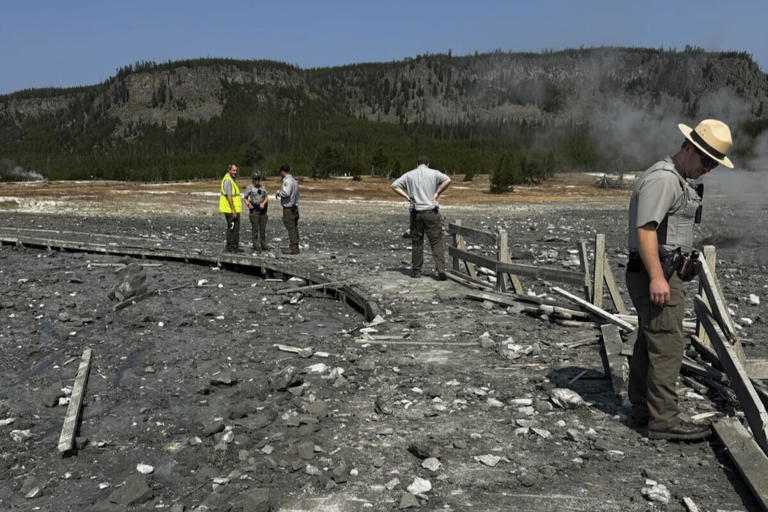A surprise hydrothermal explosion at Yellowstone National Park sent visitors running for safety on Tuesday.
The blast, which occurred around 10 a.m. in Biscuit Basin, shot steam, water, and dark-colored rock and dirt dozens of feet into the sky.
Video footage shared online showed around two dozen people watching from a boardwalk as the eruption unfolded before them.
As water and debris began to fall, the onlookers quickly retreated, some shouting “Back up!” and “Holy cow!” They then turned back to watch the dramatic scene under a massive cloud of steam.
The eruption caused significant damage to the boardwalk, an elevated wooden pathway designed to protect Yellowstone’s fragile and often hazardous geothermal areas. Photos and videos of the aftermath revealed damaged guardrails and boards covered in rock and silt near muddy pools.
Fortunately, no injuries were reported. However, the Biscuit Basin area has been closed to ensure visitor safety, according to a statement from the U.S. Geological Survey.
A hydrothermal explosion occurs when water underground suddenly flashes to steam. While such blasts are relatively common in Yellowstone, similar incidents have happened in Biscuit Basin in 2009, 1991, and after the magnitude 7.2 Hebgen Lake earthquake, 40 miles away, in 1959.
Despite the dramatic nature of the latest explosion, it was considered small, as per the Geological Survey. Scientists believe that a series of hydrothermal explosions around 13,800 years ago created Mary Bay on the northeastern side of Yellowstone Lake. At 1.5 miles wide, Mary Bay is the world’s largest known hydrothermal explosion crater.
Yellowstone is centered on a massive, dormant volcano. The recent hydrothermal explosion did not indicate any new activity within the volcanic system, which remains at normal levels, according to the Geological Survey.



